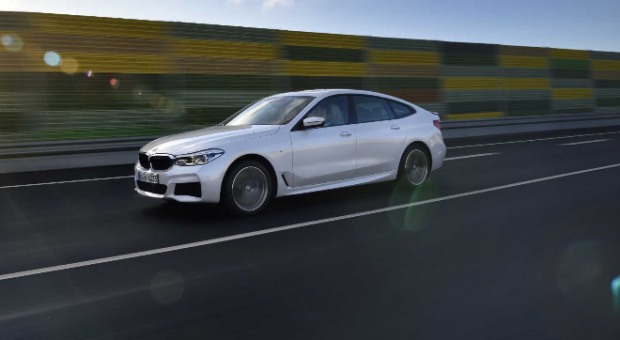
It’s every teenager’s dream to get behind the wheel and finally, do the driving themselves. Well let’s not be too one-sided, but it’s usually the boys who are the most eager. Cultures are the embers of a society that has been developing for hundreds of years. Our attitudes don’t just come to us; they’re passed down by our parents that have also been taught by their parents. So why is it that in the United States, you only need to be 16 to drive, but in the UK you need to be 18 years old? It’s bizarre and for some people enraging that they have to wait to attain their vehicular freedom while others can smile and wave as they drive by. This is doubly painful when the kid in the hot new ride hasn’t even begun to shave yet. On the flip side in America in most states, you need to be 21 years of age to drink alcohol and in the UK only 18. Why does this happen to be the case then? Culture clashes arise and take your seats for the sparks to follow! Why is the driving age as such in the UK and should it remain where it is?
The mechanical difference
Here in the UK, many cars are full manuals. Yes in the age of electric cars and sequential gearboxes it all seems a bit old-fashioned to say that. What it means is, that the gearing is done by the driver completely. You must push in the clutch pedal and move a stick in between the driver and passenger seat to get into the right gearing in order to continue accelerating. In the U.S. this is a bit of an anomaly as the overwhelming majority of cars are automatic. It’s been like this for quite some time in both countries. That’s why anyone in their mid-teens can learn to drive because all that is needed for the car to operate in the basic terms is the brake and the throttle. Obviously, it goes without saying that a full manual is much more involved and takes more skill not just to shift up and down but to stop the car from stalling as well. You do have more control over the car, but there’s more to go wrong as well. This is the fundamental difference as to why the ages are not the same. However, newer technology and engineering is putting this into question. Cars with paddles behind the steering wheel use a sequential gearbox similar to the types used in Formula One racing. Cars that have this are largely computerised, and thus they also exhibit an automatic mode. The clutch pedal is gone from these cars as the clutch is operated electronically by the software in the car.
The stigma leans towards men
Okay, this is going to get a little tricky for some sensitive ears but bear with the argument. Men and women are not the same, and we are both different in countless ways. When it comes to driving there are two stereotypes that seem to stick to us both. We have the image of the boy racer who can’t keep control of his right foot and is a menace on the roads. On the other hand, we have the concept that women drivers are just bad in general and cannot be trusted behind the wheel to be competent. In the UK the laws of the land are often superseded and passed down via the courts in the EU. There was a ruling made in 2012 whereby gender discrimination was banned from playing any part in the way insurance companies priced their plans for both genders. However, since then, almost six years on and nothing has really changed. Men are still paying higher insurance fees by around 27% more. The average policy in 2017 cost men around £821 while it cost women just £649. It seems like the stereotypes are not being equally applied by companies offering insurance plans to British motorists. Apparently, this is due to the risk models which companies use that show men are more likely to get involved in accidents as well as more men drive commercial and company vehicles. The latter is a subject of much debate as some people argue professional vehicle should play no role in the deciding factor for private car insurance prices.
Good teenage drivers
The stigma of ‘young and dumb’ is ever-present on the roads. It’s silly and downright rude to suggest that just because somebody is young, they don’t take driving seriously. In fact, there are programs in the UK that allow youth drivers to complete tougher courses. The scheme is called Pass Plus, and this goes beyond the usual driving lessons. Only after you have passed the driving test both on the road and via the highway safety questions can they take these six extra lessons. They drive in the snowy and icy conditions, they drive on the motorway for the first time and do night driving in narrow country lanes. There is a reason for taking these lessons that is beneficial to them in the long run. The price of insurance can go down by as much as 15% as they are certified as drivers more qualified than the average motorist.
Fighting their corner
It’s a sad truth, but we all have to get used to it, especially as parents. Even if your child is a good driver, he or she will still come under unfair scrutiny in the event of a collision. Since they’re young, they won’t know how to react unless your brief them in a serious manner. Again, teach them to be aware of the situation and what is going on around them when they become involved in an accident. The other driver may try and blame the collision onto them because they seem to be acting like a deer in the woods. Do not allow them to be taken advantage of despite their novice experience on the roads by themselves. In the event, the other party wishes to push forward with charges in the pursuit of making a claim you need to back up your child with a good legal team. Specialists such as Quittance’s serious road accident solicitors that work on a no win no fee basis. This is a good sign of competence as amateur solicitors will require a fee upfront just to look into your case. They instruct their clients not to be intimidated by insurance companies that may call you on the other party’s behalf. Remember that these companies have a duty to their shareholders to make a profit and they will use pressuring tactics to get you to say something that could be potentially decisive in a court of law. Young drivers are not privy to such legal force which is why they need knowledge of accident solicitors that deal with the complexities of a road accident. They’ll employ sophisticated investigative techniques that will be used to start building up a case that fights back the other party. Crucially, they can dismay any accusation that the driver was young and inexperienced thus it’s more likely that they made the fault.
So should it be changed?
Human beings are able to adapt and improve as a species; but not all at once. We’re individuals, and no matter what we personally do, people in our specific groups will affect us one way or another. Even if you’re a slick and smooth driver, someone who takes pride in their safety and mastery over their machine, other people similar in age, gender, income, car type, driving habits will have an impact on the insurance prices. Technology is literally changing the way we drive because the cars themselves operate differently. But what is the main deciding factor in today’s world that determines the driving age in the UK? The sad fact is, we don’t know. It’s an old system that the nation has been using for a long time. We haven’t even discussed the perhaps most important thing as to why the driving age is 18. At the age of 18, in the UK you are legally an adult. The law applies to you differently as opposed to a minor. So you could argue that the driving age is simply collateral to this cultural and legal acceptance. It’s also due to the need for students to move around and for the economy to have workers that are flexible. In the end, you could say that things balance each other out. Cars are becoming much more easier to drive, but as more and more young drivers hit the roads, the driving age is a ‘it ain’t broke so don’t fix it’ restriction.
Don’t forget that laws take a long time to be altered and possibly removed. So long as the human being is behind the wheel, there will always be accidents. Insurance companies may even take the opportunity of the age being decreased to hike up their prices. But as cars are becoming automated and powered by electricity, could this factor become null and void? It’s a topic which needs to be openly discussed because if vehicles are being modernized, why aren’t the attitudes toward young drivers?




















